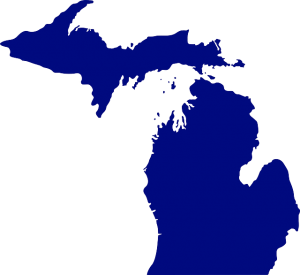NewsDesk @bactiman63
The United States Department of Agriculture’s (USDA) Animal and Plant Health Inspection Service (APHIS) has confirmed the presence of highly pathogenic avian influenza (HPAI) in Kalamazoo County, Michigan and New Castle County, Delaware.

In Michigan, HPAI was detected in a non-commercial backyard flock (non-poultry) in Kalamazoo County.
This detection shows that the virus is present in the environment and highlights the need for poultry owners to protect their flocks by increasing biosecurity.
After several birds from the affected flock died and others showed signs of illness, samples were sent to the Michigan State University Veterinary Diagnostic Laboratory (MSU VDL) for testing. The results from MSU VDL were then confirmed by NVSL.
To protect other flocks in Michigan, the premises is currently under quarantine, and the birds have been depopulated to prevent further disease spread.
In Delaware, HPAI was detected in a commercial poultry flock in New Castle County. Samples from the flock were tested at the University of Delaware’s Allen Laboratory in Newark, part of the National Animal Health Laboratory Network, and confirmed at the APHIS National Veterinary Services Laboratories (NVSL) in Ames, Iowa.

APHIS is working closely with state animal health officials in Delaware on a joint incident response. State officials quarantined the affected premises, and birds on the property will be depopulated to prevent the spread of the disease. Birds from the flock will not enter the food system.
Highly pathogenic avian influenza A viruses can cause severe disease and high mortality in infected poultry. HPAI A virus infections can cause disease that affects multiple internal organs with mortality up to 90% to 100% in chickens, often within 48 hours. However, some ducks can be infected without any signs of illness. HPAI A virus infections of poultry also can spill back into wild birds, resulting in further geographic spread of the virus as those birds migrate. While some wild bird species can be infected with some HPAI A virus subtypes without appearing sick, other HPAI A virus subtypes can cause severe disease and mortality in some wild birds as well as poultry.
Subscribe to Outbreak News TV on YouTube
This compares with low pathogenic avian influenza (LPAI) A viruses cause either no symptoms or mild disease in chickens/poultry (such as ruffled feathers and a drop in egg production). Most avian influenza A viruses are low pathogenic and cause no or few signs of disease in infected wild birds. In infected poultry, some LPAI A viruses can evolve into highly pathogenic avian influenza A viruses.
Whether a virus is classified as a LPAI or HPAI virus does not refer to whether it causes disease in humans. Both LPAI and HPAI A virus infections of humans have resulted in a wide spectrum of illness, from no symptoms or mild illness to severe disease that can result in death.
- CDC issues dengue travel advisory for Timor-Leste, other South Asian countries
- Abbott recalls powder formulas after consumer complaints regarding Cronobacter sakazakii, Salmonella Newport
- Australia: Anthrax detected in sheep near Swan Hill
- Florida: Avian influenza confirmed in wild birds
- Rabies: Genomic surveillance helps prepare for outbreaks in bats
- Philippines: Avian influenza reported in birds in Bulacan and Pampanga
- Philippines: Ormoc City, Leyte declared African swine fever free
- Lassa fever in England: WHO details

